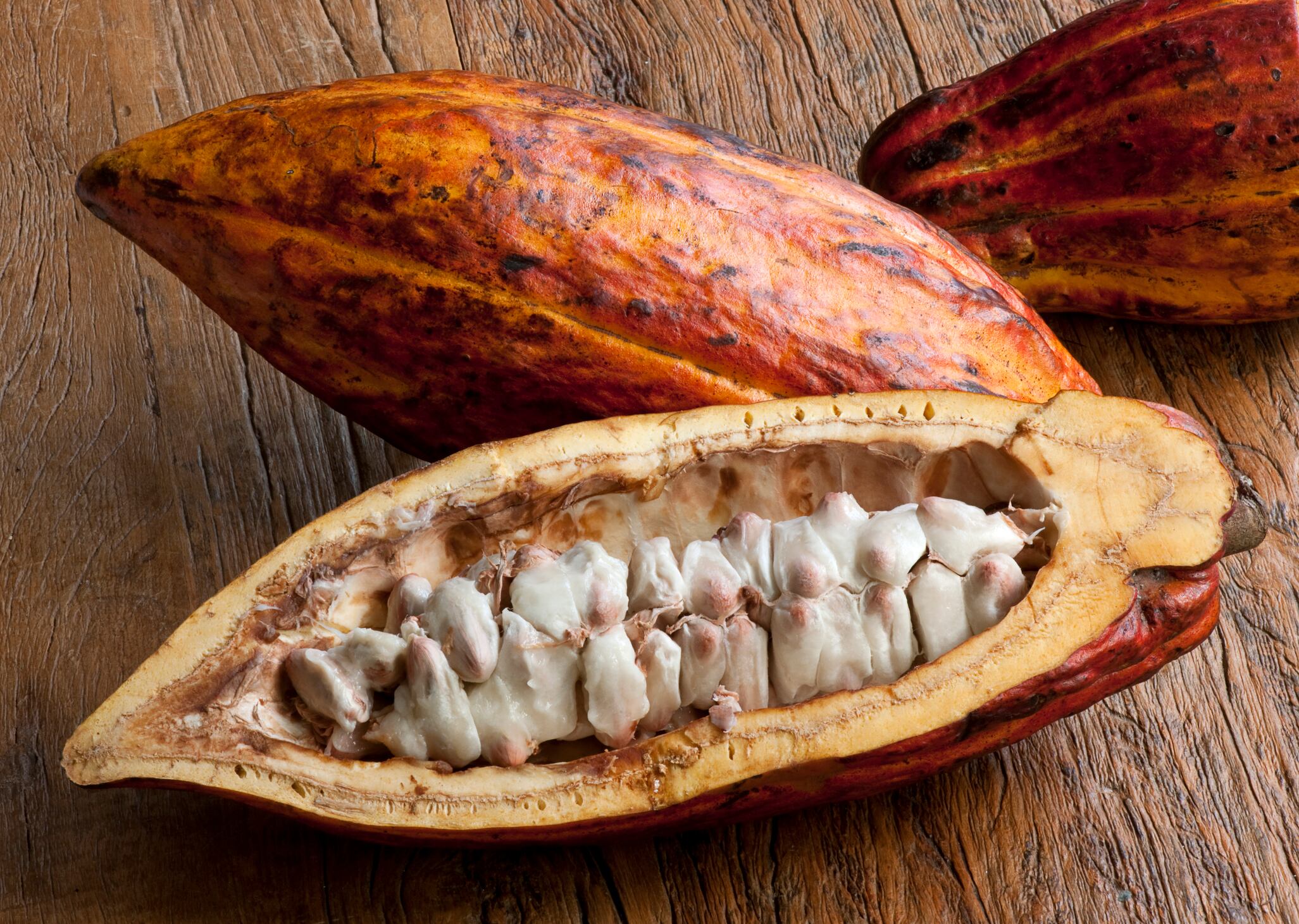In 2025, leading chocolate ingredients company Barry Callebaut is offering a full line of upcycled cacao fruit ingredients, providing strong support to initiate the rising use of cacao fruit ingredients in the consumer packaged goods industry. It also offers unique and creative food and beverage possibilities in venues like coffee shops, restaurants and bars.
While its not the first to do so – Lindt & Sprüngli partnered with Swiss-Ghanaian startup confectioner Koa to release its new Excellence chocolate bar which uses the cocoa pod’s pulp as a sweetener last summer – it demonstrates that demand for upcycled technologies is growing.
Upcycled cacao fruit
Currently, there are three core directions that producers are taking to upcycle cacao fruit.
Confectionery producers use the fresh fruity pulp around the beans to create cacao fruit juice. While prevalent in the beverage industry, cacao and fruit juice collaborations can also act as a base or part of a mix and sweetener. Manufacturers can dehydrate the pulp and use it as dried cacao fruit nuggets or as a base for energy snacks. These then mimic dates as a popular ingredient in many energy snacks, including chocolate bars and flavour combinations such as peanut butter, coconut oil and almond butter.
Manufacturers also extract the sugar from the pulp and use it as a “non-refined sugar” for chocolate bars and snacks. Brands utilise the cocoa pod’s properties as they have with non-refined coconut sugar.
Finally, brands are drying and pulverising the cocoa pod’s exterior skin. Confectioners then use powdered shells to increase dietary fibre content in chocolate and snacks, boosting other functional nutrients that are abundant in the skin.
Roots in the pre-cocoa crisis
The cocoa crisis has dominated confectioners’ concerns over the past three cocoa-producing seasons, leading manufacturers to look for alternatives to conventional cocoa ratios in formulations.
But some firms have a longer provenance in this area. Cacao upcycling brand Blue Stripes, for example, began its environmental push towards reducing waste and utilising the entire ingredient’s pod in 2017 and was born out of a growing understanding of cocoa pod’s benefits and profit potential. “The culinary and health potential hidden in the cacao fruit upcycled parts,” says Oded Brenner, CEO and Co-founder of Blue Stripes, is one core reason behind manufacturers’ interest in the entire cocoa pod’s potential. In November 2024, Blue Stripes raised a $20 million investment to develop upcycled cacao.
“The potential of increasing revenues without growing additional cacao and maximising the efficiency of the cacao agriculture,” says Brenner, is another leading factor. If farmers can make higher profits from the same cacao yield, the prices of the cacao beans wouldn’t rise so much, even if there are environmental issues that will decrease the farm’s outcome. “That is the main factor that can assist with the ‘cacao crisis’ which is happening because of low profits from the current cacao farming operations,” he adds.
Balancing taste, testing and transparency
Blue Stripes analysed the cacao fruit and components that may be ideal for upcycling as part of its R&D process. The brand states it “found [them] to be very nutritious, a powerful superfood, and therefore can be used in many unique CPG products.”
Testing and learning how to best work with cocoa’s fruit components to increase shelf life and maintain cacao’s unique flavour nuances are leading challenges associated with upcycling the entire cocoa fruit. Blue Stripes, for example, carries out its research in its Ecuadorian factories to access fresh cacao fruits as well as test and work with ingredients to achieve its confectionery goals.
To appeal to consumers, brands need to balance a waste reduction approach with other desirable characteristics such as taste and texture. Unlike other upcycled ingredients that may be nutritious but lack flavour, Blue Stripes highlights that cacao fruit and its shell flour’s inherent appealing taste attracts consumers.
“The cacao fruit is tangy and sweet, with a light floral vanilla profile and can be used all by itself or as a “canvas” for other flavours’ combinations and formulas,” says Brenner. “The cacao shell flour is earthy and full of intense cacao flavours that add cacao’s superfood nutrients and enhance unique flavour profiles in these creations.”

